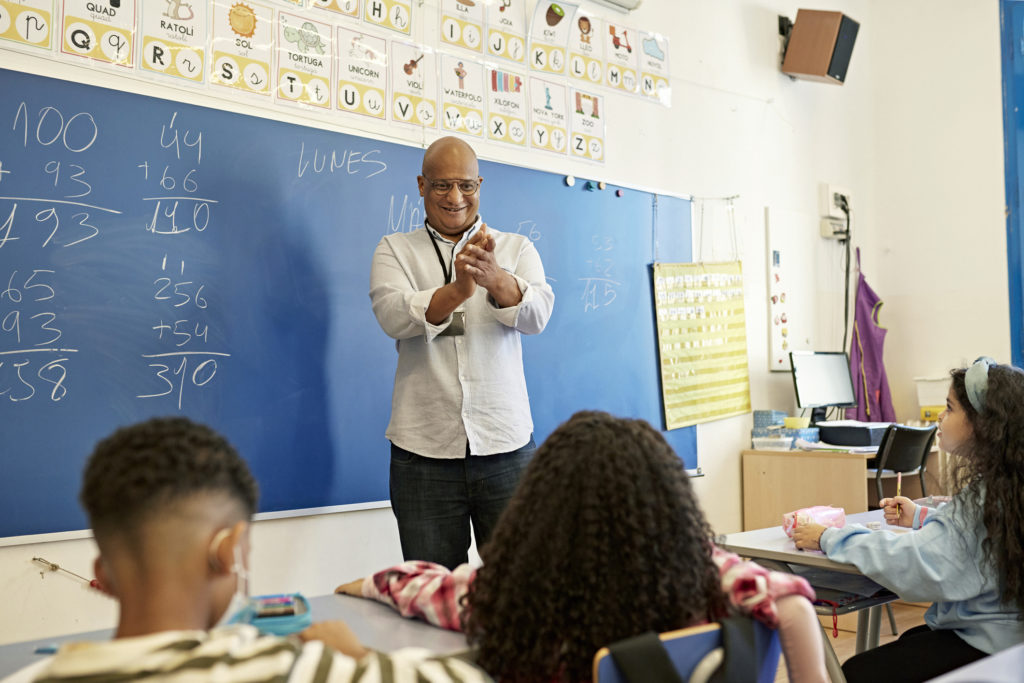I’m a “fixer.” When I see something that could be better, I want to help make it better. In some respects, this was a good trait to have as a high school English teacher. When my students’ essays were out of shape, I just saw potential. I was quick with my PaperMate Flair pen (every English teacher has their favorite marking tool) and used it liberally.
Of course, my students didn’t always appreciate all that ink. In fact, sometimes they took it personally. That wasn’t my intention, and yet, it happened. Why?
This past summer, I was reading Antiracism and Universal Design for Learning: Building Expressways to Success by Andratesha Fritzgerald, and I came across a concept called the 5:1 ratio. Basically, the idea boils down to this:
“Whomever intends to build trust (the teacher, coach, principal) needs to have five positive or neutral interactions with another person for every one corrective piece of feedback” (Aguilar, 2017).
There are many possible reasons that students were less than appreciative of my corrections, but the 5:1 ratio provides a compelling lens through which to view this problem. I was providing a lot of corrective feedback in the English classroom, and my ratio of positive interactions was often just off.
In the months since reading about the 5:1 ratio, I’ve been thinking about it a lot. Here are three reasons why I love it:
1. It’s Simple
It’s tempting to think that positive interactions are a given and that any good teacher would be meeting the 5:1 ratio. At least in my case, I know for a fact that I wasn’t. It doesn’t necessarily mean that I was a bad teacher — just one working in a high-stress environment where the priority was achievement. I suspect this might be the case for some other educators, too.
As an example, I might have made five corrective comments and five positive comments on any given student’s essay. It seemed reasonable at the time, but that was a 1:1 ratio. Looking back, knowledge of the 5:1 ratio would have encouraged me to get back to the necessary center of creating an abundance of intentionally positive interactions, in commenting on students’ work and everywhere else in my classroom.
I love how simple this is. It’s clear and easy to understand, and to me, it feels intuitive and true.
Of course, just because it’s simple does not necessarily mean it’s easy (if it were, I wouldn’t be writing this blog post!). Really, though, that’s something I love about the 5:1 ratio, too. To implement it, I will have to reflect on my own practices and make some changes. But I’m certain that it will be worth it because, for me, it’s a fundamental reframing of what’s truly important in education.
2. It Encourages Reflection
This blog post by Elena Aguilar links to the following chart, which I find really helpful when thinking through the 5:1 ratio:
The chart is aimed at instructional coaches, but I find it really helpful from the perspective of a teacher, too. When I look at it, my mind immediately jumps back to the students in my classroom.
I’m certain that I was meeting the 5:1 ratio for some students in my classroom, but not all of them, and not all of the time.
I would say that I approached each day in the classroom with an intention to be positive and kind. I think I met that goal on most days. But I ended up meeting that goal generally — I didn’t think about it from the experience and perspective of every single individual student.
Looking at a visual representation of my students and specific interactions with them would have let me see where I was specifically meeting my intention and where I was falling short.
I love that the sheet also includes students’ race and gender (I would name the column “Gender Identity” instead of “Male/Female”). I’d like to think that my ratio of positive interactions was consistent with regards to students’ identities. Another intention of mine was to teach with equity in mind, after all. Looking at this sheet reveals to me, though, that I was not as mindful or specific about this as I could have been and should have been. Now that I recognize this, the “fixer” in me sees a lot of potential to improve my practice.
3. It Inspires a Plan
Once I know better, I want to do better. The 5:1 ratio inspires me to make a concrete plan to do better the next time I have the privilege of teaching students in the classroom.
If you’re interested in deepening your practice with the 5:1 ratio, my team and I created a free template to help you get started. This template includes a variety of resources — including the ones already mentioned in this article — along with space for reflection. It also includes a few additional strategies that I’d like to try for myself:
- Dialogue journals, which provide a space to converse and connect with every single student on a regular basis. I would love to establish conversations that I come back to every week or every two weeks. This would definitely be a place to create a routine that guarantees positive interactions, and it would also help me to get to know my students even better.
- Delayed grading, which makes it possible to simply provide observations as comments for students (keeping interactions positive or neutral) and let the students correct themselves. Besides helping to maintain the 5:1 ratio, this also makes the grading process more meaningful for students because it encourages them to take ownership.
- Greeting every student personally, every day, which can build trust, increase student engagement, and lower teacher stress. When I was in the classroom, it was a challenge to make this happen every day. In the future, I’d like to slow down and make this a priority, even if that means that part of my preparation for the next class hour happens after the bell rings.
Ultimately, the 5:1 ratio has completely changed my thinking about interactions in the classroom. It all started with a question about grading. After all, part of our jobs as teachers is to provide corrective feedback to help students grow. The 5:1 ratio helps to ensure that students can receive this feedback effectively. More importantly, however, it can help us be intentional about creating a classroom environment that centers our humanity.







